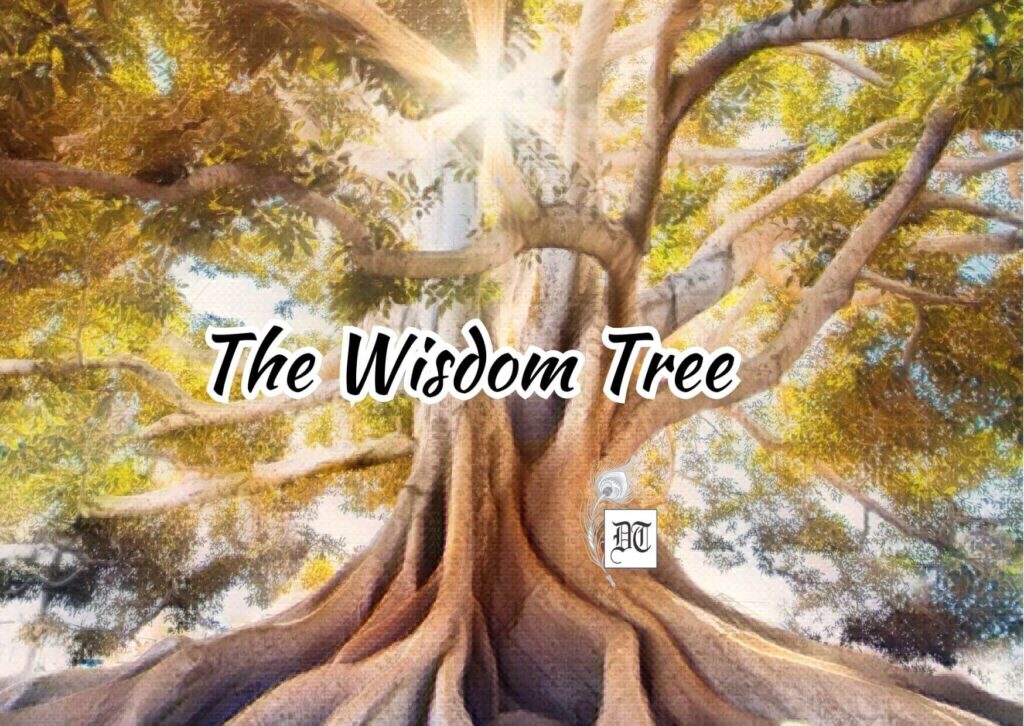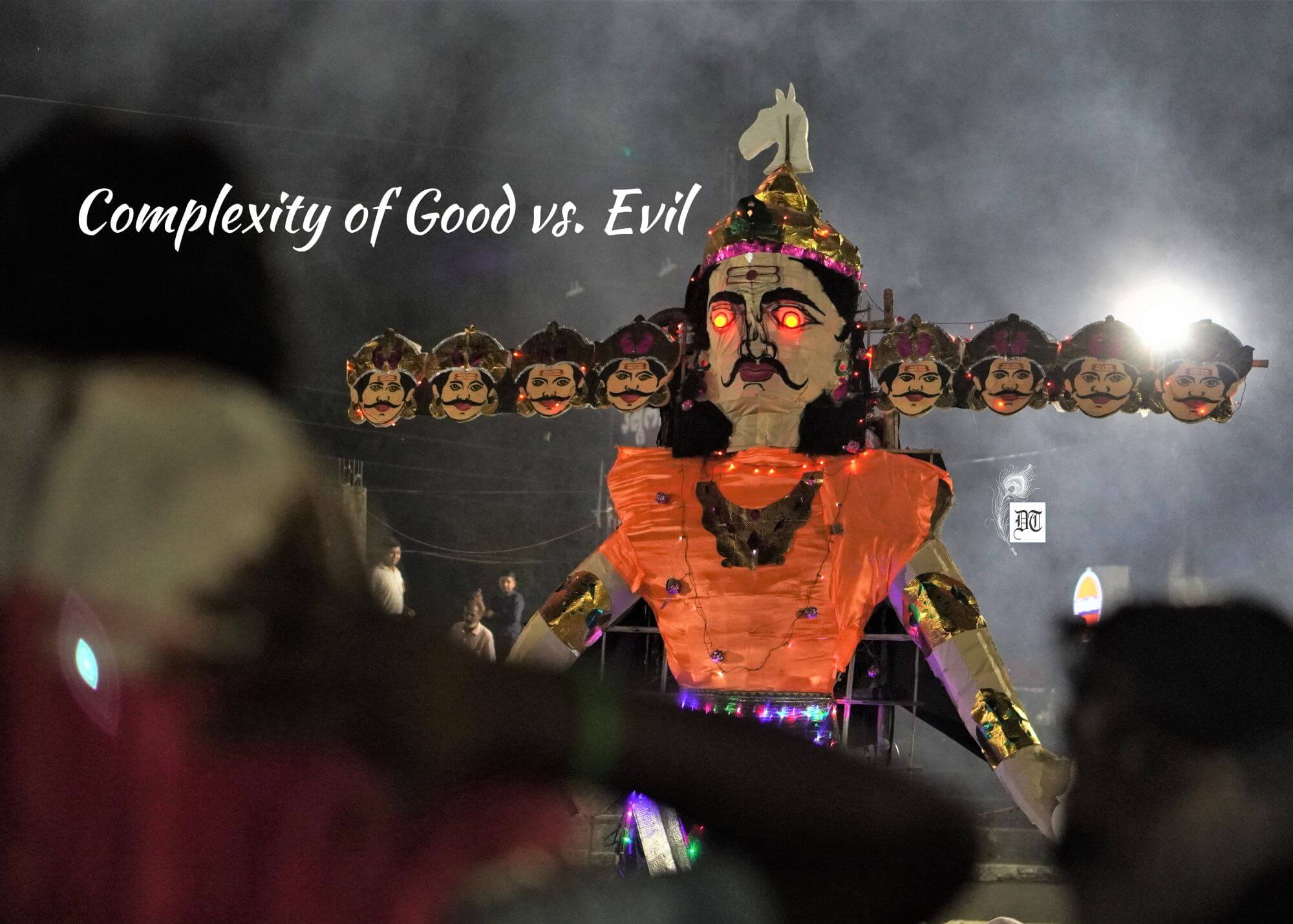Reading Time: 4 minutes
Raavan, the antagonist in the Ramayana, is often depicted as evil, but his divinity is also a captivating and lesser-known aspect of his character, elucidates Rajul, exclusively for Different Truths.

The story of Raavan, the formidable antagonist of the ancient Indian epic, the Ramayana, has long intrigued scholars, theologians, and storytellers. While Raavan is often portrayed as a symbol of evil due to his abduction of Sita and his relentless pursuit of Lord Rama, there is a lesser-known aspect of his character that is equally captivating: his divinity. In this article, we will delve into the enigmatic figure of Raavan and explore the elements that made him a divine personality, shedding light on the complex and multifaceted nature of this iconic character. The ritual of burning Raavan on Vijayadashami or Dussehra doesn’t symbolise the killing of Raavana; it symbolises the killing of evil inside him and releasing the divine. Let’s understand here.
The Ten Heads: Symbol of Knowledge
One of the most distinctive features of Raavan’s appearance is his ten heads. These ten heads are often interpreted as a symbol of his profound knowledge and wisdom. According to Hindu mythology, Raavan was an erudite scholar and a devout devotee of Lord Shiva. It is believed that each of his heads represented a particular facet of knowledge, including the Vedas, scriptures, and various arts and sciences. This portrayal of Raavan as a scholar and a connoisseur of wisdom underscores his divine attributes.
A Devotee of Lord Shiva
Raavan’s devotion to Lord Shiva is a significant aspect of his divinity. He was a staunch worshipper of Shiva, performing rigorous penances and austerities to earn the favour of the Lord. In his unwavering devotion, he once attempted to lift Mount Kailash, the abode of Lord Shiva, a feat no ordinary mortal could achieve. This act not only showed his immense strength but also his deep reverence for the divine.
Furthermore, it was his devotion to Lord Shiva that granted him certain divine blessings, making him nearly invincible. This connection with one of the principal deities in Hinduism further adds to the divine complexity of Raavan’s character.
Connoisseurs of Arts and Music
Raavan was not just a warrior but also a patron of the arts. He was an accomplished musician, and his mastery of the veena is celebrated in various texts. He even invented a musical instrument called Raavan-Hattha, which is played by local musicians and artists even now in the subcontinent. His knowledge and love for music and the arts contributed to his multifaceted persona, which went beyond the realm of a mere demon king. His artistic sensibilities and creative talents are facets of his divine character that are often overlooked.
The Architect of Lanka
Raavan’s capital, Lanka, was a marvel of architecture and engineering. He was not only a valiant warrior but also a visionary ruler and an exceptional architect. The grandeur of Lanka, as described in the Ramayana, showcases his exceptional skills in city planning and architecture. The divine aspect of this lies in his ability to create a city that was considered unrivalled in its beauty and splendour. Present-day Sri Lanka has many places with archaeological studies indicating the rule of Raavana there once upon a time, as the findings match the description of the place with the Ramayana.
A Defender of Dharma
While Raavan is primarily remembered for his antagonistic role in the Ramayana, some versions of the epic present him in a different light. In these interpretations, Raavan is depicted as a defender of dharma (righteousness) in his way. He ruled Lanka with a strong sense of justice and upheld the principles of dharma within his kingdom. This alternative perspective emphasizes his adherence to certain moral codes and his pursuit of a just society, characteristics that are often associated with divine beings.
Multifaceted Personality
Raavan’s multifaceted personality is another element that adds to his divine aura. He was not a one-dimensional character but a complex blend of virtues and vices. His qualities ranged from his immense knowledge and wisdom to his unmatched valour and strategic brilliance. His multifaceted personality is reminiscent of the divine beings in Hindu mythology who don’t have any fixed characteristics and have a wide range of abilities.
A Master of Yoga and Meditation
Raavan was also a Master of Yoga and meditation. His intense penance and meditation to attain boons and blessings from the gods showcase his deep spiritual connection. The ability to engage in profound meditation and ascetic practices is often associated with divine beings and enlightened souls. In this aspect, Raavan transcended the boundaries of a mere mortal and approached the divine.
An Eminent Scholar of Ayurveda
Raavan’s expertise in Ayurveda, the ancient system of medicine, is well documented. He was considered one of the foremost authorities on healing and medicine in his time. His knowledge of Ayurveda extended to the use of medicinal herbs and the treatment of various ailments. This further illustrates his divine attributes, as healers and physicians were often regarded as divine beings in Indian culture.
The Ten-Headed Deity or Evil?
Raavan is indeed a complex and multifaceted character who defies simplistic categorizations of good and evil. While he is predominantly known for his role as the antagonist in the Ramayana, delving deeper into his character reveals a profound and multifaceted personality with elements of divinity. His ten heads, devotion to Lord Shiva, artistic talents, architectural prowess, and multifaceted personality all contribute to his divine attributes.
The fact that Raavan had ten heads is primarily a symbol of being everything yet subjugating to one trait the most: excessively bloated ego, which became the reason for the plight of all the believers in the universe. Having God-like properties made him believe that he was above the order of the universe and should be revered. The power he possessed couldn’t be handled by him, even when he was blessed with the intelligence of ten heads! His divinity melted into a mess of cruelty, and sadly, a potential perpetrator of golden history became a villain in cultural lore not only in India but across the world in different forms.
In the end, Raavan’s character serves as a reminder of the intricate nature of mythology, where good and evil often coexist within the same individual. His story invites us to explore the deeper dimensions of characters and consider the possibility that divinity can manifest in unexpected and complex ways.
Picture design by Anumita Roy
















